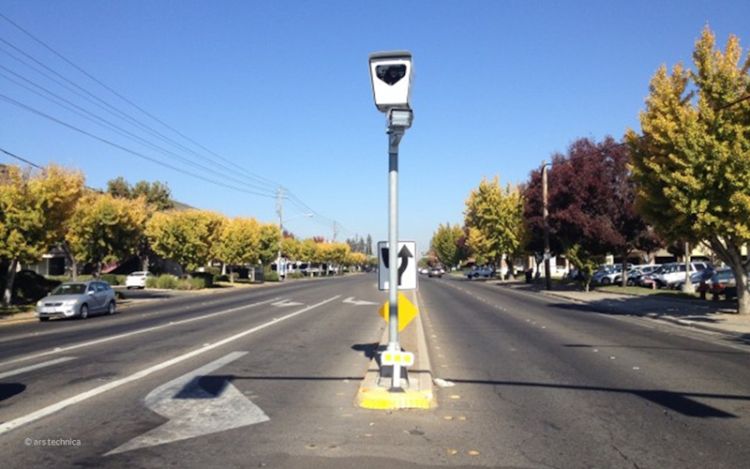How do red-light cameras improve road safety and fleet compliance?
The move toward automated traffic control measures has brought considerable benefits to drivers and fleet managers, with red light cameras playing a crucial role in maintaining road safety.

In recent decades, traffic enforcement has undergone a significant transformation. The shift from manual to automated methods has been driven by the need to improve safety on increasingly congested roads. Automated traffic control technologies, such as red-light cameras, have become essential for maintaining road safety and ensuring traffic regulations compliance.
Several factors can explain the changes in traffic enforcement, such as the increase in traffic volume and miles/km traveled annually. Moreover, financial restrictions and economic pressures have also strained police officers, leaving them with their hands full. Municipalities have increasingly turned to automated traffic control systems, as these technologies provide a practical solution for monitoring traffic and enforcing laws without requiring a constant physical police presence.
Benefits of automated traffic control systems
Reduced road accidents
Automated systems help mitigate accidents and the resulting fatalities and injuries annually;
Increased security for police officers
These systems reduce the need for police officers to conduct potentially dangerous traffic stops on busy roads;
Reduced potential subjectivity
Unlike human officers, automated systems provide objective evidence that is difficult to dispute;
Public safety convenience
By allocating more officers to high-priority tasks, automated systems ensure continuous enforcement of traffic laws.
Depending on the country in which you live and drive, you may come across various types of automated traffic control measures:
- Speed Cameras: Detect drivers exceeding speed limits;
- Red-Light Cameras: Capture images of vehicles running red lights;
- Toll Booth Cameras: Identify drivers who evade toll payments;
- Bus Lane Cameras: Ensure that only buses use designated lanes;
- High-Occupancy Vehicle Lane Cameras: Monitor compliance with carpool lane requirements;
- Stop Sign Cameras: Detect vehicles that fail to stop at stop signs;
- Turn Cameras: Monitor illegal turns at intersections;
- Automatic Number Plate Recognition Systems: Record and store vehicle license plate numbers.
Red-light cameras: can they increase road safety?
Red-light cameras, in particular, have proven highly effective in reducing road accidents, deaths, and injuries. By capturing images of vehicles that run red lights, these cameras help deter dangerous driving behaviors.
Studies have shown a significant decrease in violations and subsequent accidents at intersections equipped with red-light cameras. For example, the American Insurance Institute for Highway Safety (IIHS) found that red-light cameras reduce fatal red-light running crashes by 21% in large cities. This reduction in violations correlates with fewer accidents, saving lives and preventing injuries.
Automated traffic enforcement in fleet management
For commercial fleets, red-light cameras can also play a critical role in ensuring driver compliance with traffic regulations. When fleet drivers receive citations for running red lights, fleet managers can use this information to educate drivers and improve their driving behavior, preventing future violations. This proactive approach enhances fleet safety and helps maintain the company's reputation for responsible and lawful operation.
Shifting to automated traffic enforcement represents a significant advance in road safety. It ensures a safer and more compliant driving environment by addressing the limitations of traditional enforcement methods, leveraging technology, and enhancing road safety by promoting safer driver behavior.
Source:
Automotive Fleet
- Frotcom
- Red-light cameras
- Automated traffic control
- Road safety technologies
- Traffic enforcement solutions
- Traffic safety measures
- Automated enforcement systems
- Fleet compliance management
- Fleet safety strategies

